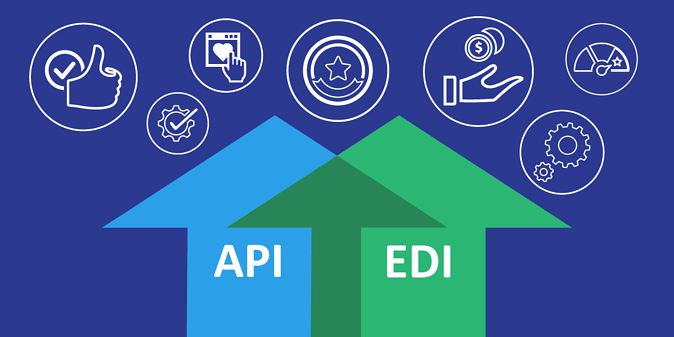It’s 11:00 p.m. Do you know where that critical shipment is?
When an important shipment containing parts essential to your flagship product is delayed in transit, the delay can resonate throughout your manufacturing process and impact orders. If you don’t know the problem exists in your supply chain, you’re left scrambling to fulfill orders and maintain production levels. Lack of supply chain visibility puts your business at risk, affecting not only your bottom line but also your company’s reputation.
Supply Chain Visibility Benefits
According to research firm Gartner, supply chain visibility is a top priority among supply chain leaders and Chief Supply Chain Officers (CSCOs) across a wide range of industries and geographies. And for good reasons: visibility into your supply chain not only lets you mitigate late shipment scenarios but also helps you proactively mitigate these problems. Supply chain visibility can also help you identify risks and potential savings.
When visibility is combined with business intelligence, predictive analytics, and artificial intelligence (AI)—organizations can gain unprecedented supply chain insights that can transform their operations.
While there are too many benefits to cover in a single blog post, let’s explore three benefits of efficient, intelligent supply chain visibility that are top-of-mind.
1. Supply Chain Visibility Generates Value
One of the immediate benefits of supply chain visibility is that helps to identify where inefficiencies lie in the supply chain, driving improvements. For example, this could involve multiple warehouses or DCs, each with a separate contract with a supplier. The ability to view and analyze the supplier’s performance across locations could help to negotiate a better contract with that supplier, put better SLAs in place, or recognize the need to seek out a new supplier that will meet standards consistently.
It also helps to identify strategic opportunities to reduce costs and improve customer satisfaction through partnerships with other organizations.
Providing better visibility to your customers can create value as well. For example, enabling them to track the status of their orders and shipments on-demand via self-service provides a better overall customer experience that can increase customer satisfaction, retention, and loyalty.
2. The Ability to Manage Risk Proactively
With greater visibility into your supply chain, you’ll know where and when you’ll receive critical components for manufacturing. In the case of a shipment delay, visibility helps you respond quickly and proactively, alerting customers or making alternate arrangements to keep the assembly line running.
Leveraging predictive analytics, you can run models as to what could happen with multiple scenarios and make a more informed decision about what to do next. For example, you may discover that pushing back production will create a chain reaction impacting most of your customers—but ordering the component from another supplier will allow you to remain on schedule.
Predictive modeling also shows you that demand for a product is expected to remain high. So, you learn that while it may cost more for a shipment from another supplier or warehouse, you will be able to meet your goals for the quarter.
3. Improved Speed and Performance
Multiple contracts, inefficient shipping routes, or even delays in processing purchase orders may be slowing down your supply chain. Some of these issues may only affect the enterprise internally, which hurts the bottom line. But others may be impacting your customers as well, which chips away at your bottom line and your reputation as they search for other suppliers.
Digging through thousands of transactions and multiple systems to identify potential delays isn’t realistic. Manually connecting the dots among these transactions to identify root causes of delays is time and skill-intensive. By the time issues are recognized, irreversible damage may have been incurred.
With the help of some advanced B2B integration and cognitive supply chain capabilities, including the IBM Supply Chain Business Network, Supply Chain Insights, and Eliassen Group B2B Framework, you can leverage dashboards and reports to quickly identify where the lag time is, where the negotiation opportunities are, and where there are further opportunities to forge new, profitable partnerships.
You can also gain real-time insights to ensure consistency, performance, and compliance across your partners and locations.
Furthermore, you can tap into artificial intelligence, cognitive capabilities, and advanced analytics to reduce the time and costs of bringing your product to market, reduce inventory costs, and optimize revenue opportunities. We’ll explore these and others in future posts.
Superior Outcomes Through Supply Chain Visibility, Intelligence and Insights
Being proactive puts you at an advantage in a competitive marketplace, and greater supply chain visibility gives you the edge you need to outperform and outpace your competitors.
However, these benefits don’t result from improved visibility alone. For example, integration capabilities enable better collaboration among departments, partners, suppliers, and customers—improving the ability to respond and adapt quickly. Real-time alerts help to equip users to take action at the right time and help to avoid a crisis
Business Intelligence (BI), and predictive and prescriptive analytics help to identify patterns in massive amounts of data, support better decision-making, and identify new and better ways of doing things. And Artificial Intelligence (AI) and cognitive capabilities help to augment a team’s skills and knowledge, and deliver the right information and insights to them at the right time. This enables teams to achieve superior outcomes.
Together, these capabilities enable you to respond quickly to unforeseen circumstances, keep your operations on schedule, avoid costs and disruptions, and exceed customer expectations—value that cannot be overstated in today’s environment.
Improve your Supply Chain Visibility Today
To learn more about how you can unleash the benefits of greater supply chain visibility, view this white paper from our partner, IBM.



